national security letter
description: US government administrative subpoena
24 results
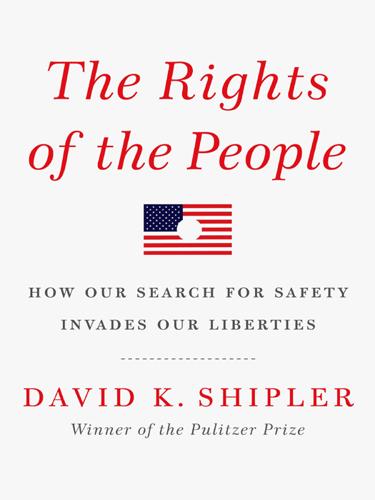
The Rights of the People
by
David K. Shipler
Published 18 Apr 2011
Twenty-six of 212 approvals found U.S. persons listed as non-U.S. persons. The default has since been changed to U.S. person. Office of Inspector General, A Review of the Federal Bureau of Investigation’s Use of National Security Letters, p. 35. 37. Executive Order 12333, § 2.4 of Dec. 4, 1981. 38. Patriot Act, § 358(g), amending the Fair Credit Reporting Act. 39. OIG report, National Security Letters, p. 113 n. 150. 40. OIG report, National Security Letters, p. 114 nn. 151, 152. 41. James Bamford, The Shadow Factory (New York: Doubleday, 2008), pp. 19–20. 42. “Summary of the White House Review of the December 25, 2009 Attempted Terrorist Attack,” White House, Jan. 8, 2010. 43.
…
An FBI request for information to help catch terrorists, and possibly foil a plot, would not strike most Americans as anything out of line, and certainly not something to litigate ponderously through the courts while the culprits might be preparing an attack. Such “exigent circumstances,” as they’re called by laws permitting shortcuts, excuse warrantless interventions in the face of imminent danger. The National Security Letter is such a tool, quickly and easily issued by the head agent of any FBI field office. But the FBI seemed in no hurry here. A full five months had passed since the suspicious e-mail had been sent. The National Security Letter addressed to Sutton was dated May 19, nearly two months before the FBI had gotten around to calling him. And not until ten days after that conversation had agents finally bothered to serve the letter on Christian.
…
Happily for democracy, censors are rarely perfect, and thanks to a chance episode of government sloppiness, more has been learned about this National Security Letter than any other. When papers were filed in the lawsuit, the plaintiff was disguised with the pseudonym “John Doe,” but when a list of pending cases was posted on the court’s Web site, the real name accidentally appeared, there to be found by an alert New York Times reporter as “Library Connection Inc. v. Attorney General.”8 Alone among the multitudes of National Security Letters served secretly on individuals and companies, therefore, this one jumped into view from the shadows of post-9/11 surveillance.

The Future of the Internet: And How to Stop It
by
Jonathan Zittrain
Published 27 May 2009
If the government has questions about the identity of a user of a particular Internet Protocol address, a national security letter could be used to match that address to a subscriber name. Under section 505 of the PATRIOT Act, national security letters do not need to meet the probable cause standard associated with a traditional warrant: the FBI merely needs to assert to the private recipients of such letters that the records are sought in connection with an investigation into international terrorism.55 Government officials have indicated that more than thirty thousand national security letters are issued per year.56 A recent internal FBI audit of 10 percent of the national security letters obtained since 2002 discovered more than a thousand potential violations of surveillance laws and agency rules.57 Recipients of FISA orders or national security letters may press challenges to be permitted to disclose to the public that they have received such mandates— just as an anonymous car manufacturer sued to prevent its onboard navigation system from being used to eavesdrop on the car’s occupants58—but there is no assurance that they will do so.
…
Only four were rejected each year. In 2005, 2,074 applications were made, with 2 rejections, and in 2006, 2,181 were made, with 5 rejections.51 Any custodians might also be served a national security letter concerning the production of so-called envelope information. These letters are written and executed without judicial oversight, and those who receive such letters can be prohibited by law from telling anyone that they received them.52 National security letters may be used to solicit information held by particular kinds of private parties, including the records of telephone companies, financial institutions (now including such entities as pawnshops and travel agencies), as well as ISPs.53 For ISPs, the sorts of information that can be sought this way are “subscriber information and toll billing records information, or electronic communication transactional records.”54 This envelope information is not thought to extend to the contents of e-mail but includes such things as the “to” and “from” fields of e-mail—or perhaps even the search engine queries made by a subscriber, since such queries are usually embedded in the URLs visited by that subscriber.
…
Under section 505 of the PATRIOT Act, national security letters do not need to meet the probable cause standard associated with a traditional warrant: the FBI merely needs to assert to the private recipients of such letters that the records are sought in connection with an investigation into international terrorism.55 Government officials have indicated that more than thirty thousand national security letters are issued per year.56 A recent internal FBI audit of 10 percent of the national security letters obtained since 2002 discovered more than a thousand potential violations of surveillance laws and agency rules.57 Recipients of FISA orders or national security letters may press challenges to be permitted to disclose to the public that they have received such mandates— just as an anonymous car manufacturer sued to prevent its onboard navigation system from being used to eavesdrop on the car’s occupants58—but there is no assurance that they will do so. Indeed, many may choose to remain silent about cooperating with the government under these circumstances, thereby keeping each of these searches secret from the target.

Data and Goliath: The Hidden Battles to Collect Your Data and Control Your World
by
Bruce Schneier
Published 2 Mar 2015
The UK police won’t even admit: Joseph Cox (7 Aug 2014), “UK police won’t admit they’re tracking people’s phone calls,” Vice, http://motherboard.vice.com/read/uk-police-wont-admit-theyre-tracking-peoples-phone-calls. Those who receive such a letter: This is a fascinating first-person account of what it’s like to receive a National Security Letter. It was published anonymously, but was later revealed to be the work of Internet Archive founder Brewster Kahle. Anonymous (23 Mar 2007), “My National Security Letter gag order,” Washington Post, http://www.washingtonpost.com/wp-dyn/content/article/2007/03/22/AR2007032201882.html. the reason the FBI: Kim Zetter (3 Mar 2014), “Florida cops’ secret weapon: Warrantless cellphone tracking,” Wired, http://www.wired.com/2014/03/stingray.
…
Under the Fourth Amendment to the US Constitution, the government must demonstrate to a judge that a search might reasonably reveal evidence of a crime. However, the FBI has the authority to collect, without a warrant, all sorts of personal information, either targeted or in bulk through the use of National Security Letters (NSLs). These are basically administrative subpoenas, issued by the FBI with no judicial oversight. They were greatly expanded in scope in 2001 under the USA PATRIOT Act (Section 505), although the initial legal basis for these letters originated in 1978. Today, NSLs are generally used to obtain data from third parties: email from Google, banking records from financial institutions, files from Dropbox.
…
Lavabit was an e-mail service that offered more security privacy than the large corporate e-mail services most of us use. It was a small company, owned and operated by a programmer named Ladar Levison, and it was popular among the tech-savvy. It had half a million users, Edward Snowden amongst them. Soon after Snowden fled to Hong Kong in 2013, Levison received a National Security Letter demanding that the company turn over the master encryption key that protected all of Lavabit’s users—and then not tell any of its customers that they could be monitored. Levison fought this order in court, and when it became clear that he had lost, he shut down his service rather than deceive and compromise his customers.
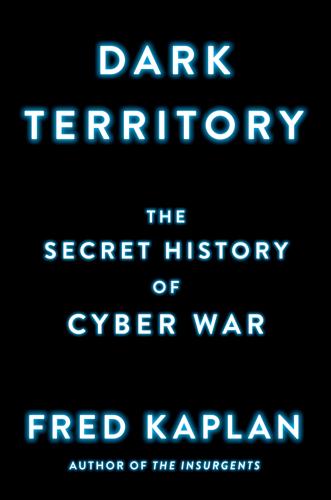
Dark Territory: The Secret History of Cyber War
by
Fred Kaplan
Published 1 Mar 2016
This camaraderie took hold on the second day of their work when the five went to the J. Edgar Hoover Building—FBI headquarters—in downtown Washington. The group’s staff had requested detailed briefings on the bureau’s relationship with the NSA and on its own version of metadata collection, known as National Security Letters, which, under Section 505 of the Patriot Act, allowed access to Americans’ phone records and other transactions that were deemed “relevant” to investigations into terrorism or clandestine intelligence activities. Unlike the NSA’s metadata program, the FBI’s had no restrictions at all: the letters required no court order; any field officer could issue one, with the director’s authorization; and the recipients of a letter were prohibited from ever revealing that they’d received it.
…
When the five arrived at the bureau’s headquarters, they were met not by the director, nor by his deputy, but by the third-ranking official, who took leave after escorting them to a conference room, where twenty FBI officials sat around a table, prepared to drone through canned presentations, describing their jobs, one by one, for the hour that the group had been allotted. Ten minutes into this dog-and-pony show, Clarke asked about the briefings that they’d requested. Specifically, he wanted to know how many National Security Letters the FBI issued each year and how the bureau measured their effectiveness. One of the officials responded that only the regional bureaus had those numbers, no one had collated them nationally; and no one had devised any measure of effectiveness. The canned briefings resumed, but after a few more minutes, Clarke stood up and exclaimed, “This is bullshit.
…
One of the key recommendations grew out of the group’s conversation with General Alexander: all metadata should be removed from Fort Meade and held by the private telecom companies or some other third party, with the NSA allowed access only through a FISA Court order. The group was particularly firm on this point. Even Mike Morell had come to view this recommendation as the report’s centerpiece: if the president rejected it, he felt, the whole exercise will have been pointless. Another proposal was to bar the FBI from issuing National Security Letters without a FISA Court order and, in any case, letting recipients disclose that they’d received such a letter after 180 days, unless a judge extended the term of secrecy for specific national security reasons. The point of both recommendations was, as the report put it, to “reduce the risk, both actual and perceived, of government abuse.”

Three Felonies a Day: How the Feds Target the Innocent
by
Harvey Silverglate
Published 6 Jun 2011
In the summer of 2005, the American Civil Liberties Union (ACLU) found itself embroiled in a lawsuit it brought against the federal government, seeking to have the federal court in Connecticut invalidate a strict gag provision contained in the so-called “National Security Letters” (NSL) section of the USA Patriot Act, enacted after the terrorist attacks of September 11, 2001. National Security Letters are documents delivered to some institution or repository of records or accounts—a bank or a library, for example—by federal law enforcement agencies, seeking access to information about customers, clients, book borrowers and such.
…
Other documents might be redacted in order to protect the identity of informants or undercover operatives. Memorandum “To: All ACLU, ACLU Foundation and ACLU Affiliate Staff ” from Ann Beeson, dated August 26, 2005, “re: URGENT: Restrictions on Information Regarding ACLU v. Gonzales, Our Legal Challenge to the National Security Letter Issued to an Organization with Library Records.” 29. Chapter Seven: 1. Meghan Martin & Larry Larsen, “A Guide to Journalist Shield Laws,” Poynter Online, available at http://www.poynterextra.org/shieldlaw/states.htm (accessed June 5, 2008). Portions of the discussion of the Jared Paul Stern case have appeared previously in Harvey A.
…
See composing witness testimony Cragan, John F., 28 credibility judgements, by juries, 72 Credit Suisse First Boston (CSFB), 106–110, 112 crimes by analogy, 26 criminal defense attorneys, as civil liberties lawyers, 269–270 criminal forfeiture allegation, 66 criminal law, keeping pace with new developments, xxvi–xxviii criminal obstruction of justice Arthur Anderson and, 137 Stewart, Martha, and, 116, 120 three felonies a day “Criminal Penalties for Altering Documents,” 161 criminal vs. civil prosecution, xliii–xliv Critical Art Ensemble (CAE), 233–234, 236 Crovitz, Gordon, 101–102 CSA (Controlled Substances Act), 47, 56, 59–62 CSFB (Credit Suisse First Boston), 106–110, 112 CTR (Cash Transaction Report), 19–21, 26 culpable state of mind, xxxv Curley, James Michael, 43 Dalglish, Lucy, 210 data-mining, 212 “date-rape” drug, 63 Day, Samuel, Jr., 205 DEA (Drug Enforcement Administration), 46–47, 49, 51–53 323 attacks on social and professional relationships, 265 Cintolo and, 166–181 Councilman and, 257–264 disclosure of confidential sources and, 207–212 espionage and, xiv, 202, 219 First Amendment and, 204 KPMG and, 138–152 Milken and, 98–102 Muntasser and, 240–247 National Securities Letters and, 186–187 national security and, 224–232 options backdating and, xix–xxi Pentagon Papers and, 197–201 Pfeiffer and, 215 “Principles of Federal Prosecution of Business Organizations,” 144 Quattrone and, 106–114 Rosen and Weissman and, 248–253 selective prosecution by, 28–29 Stewart, Martha, and, 114–121 debarment, 80, 89 Department of State, 215, 225 defense information, publication of, 202–207 dependence, drug, 49, 52 deferred prosecution agreement, KPMG, 146–147, 152 Dershowitz, Alan, xliv, 103, 227, 267, 269 DeGiorgio, Domenick, 150 destruction of contraband, 159–166 Delgado, Renan, 8 destruction of documents.
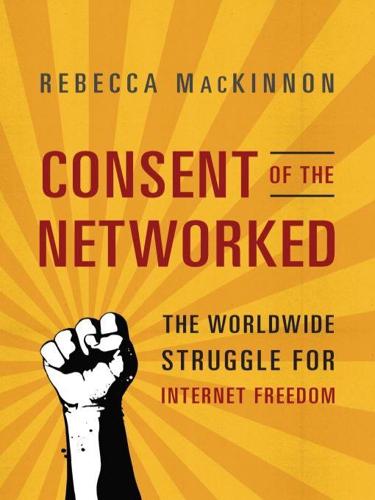
Consent of the Networked: The Worldwide Struggle for Internet Freedom
by
Rebecca MacKinnon
Published 31 Jan 2012
It is alarming that the Department of Justice suspends its concern for citizens’ privacy and civil liberties when it comes to their digital lives. Though the US government is required by law to document publicly its wiretapping of phone lines, as of mid-2011 it was not required to do so with Internet communications. Furthermore, until 2009, companies complying with National Security Letters (NSL)—a kind of administrative demand letter requiring no probable cause or judicial oversight—were barred by a provision of the Patriot Act from informing customers about the existence of the NSL requests. The constitutional challenge to this gag provision was not mounted by any of the large brand-name Internet and telecommunications companies, which are believed to have received hundreds of thousands of these secret letters over the past decade.
…
The EFF estimated that based on analysis of documents it obtained through Freedom of Information Act requests, as many as 40,000 violations of law may have occurred during that period. Judicial and congressional oversight of FBI intelligence investigations was found to be “ineffectual.” Furthermore, the EFF found that in nearly half of cases in which the FBI abused the use of National Security Letters requesting information, phone companies, Internet service providers, financial institutions, and credit agencies “contributed in some way to the FBI’s unauthorized receipt of personal information.” For Americans seeking to change existing laws that they believe are wrong, ill-advised, or unfair, or for anybody who happens to be engaged in dissent, activism, or whistle-blowing that powerful people would like to prevent or contain, such a situation is chilling.
…
Krumholtz, Jack Kurtzman, Daniel Kyaboon La Quadrature du Net La Rue, Frank Lanier, Jaron Lantos, Tom Law Enforcement Work Party, Council of European Union Lawful intercept systems Lazaridis, Mike Leahy, Patrick Lee Myung-bak Lessig, Lawrence Level 3 Communications Levellers Li, Robin Libya, government shutdown of Internet service in Lieberman, Joseph Linux Liu Xiaobo LiveJournal Locke, John Lookout Lugar, Richard Madison, James Maduna, Taurai Magna Carta Makau, Tom Manning, Bradley Marx, Karl The Master Switch: The Rise and Fall of Information Empires (Wu) MasterCard McMahon, Mike McNamee, Joe Medvedev, Dmitry Merrill, Nick Mertha, Andrew Mesh networks MetroPCS Microsoft agreement to China’s censorship criteria Global Network Initiative (GNI) and lobby to update ECPA protection of human rights activists by Min Jiang Minerva (Park Dae-Sung) Mobile Active Mobile phones Android censorship and surveillance of iPhone mesh networks Mobile Active security and Tor Moglen, Eben Morozov, Evgeny Mozilla MSN Spaces Mubarak, Hosni Mubarak, Suzanne Mueller, Milton Mullenweg, Matt Munk Center, University of Toronto NARAL Pro-Choice America Narus Nashi National Religious Broadcasters National Security Letters (NSL), unconstitutionality of Navalny, Alexey Nawaat The Net Delusion (Morozov) Net neutrality abuse of arguments against Federal Communications Commission rules on laws promoting mobile access and in US Netflix Netherlands, net neutrality law in “Netizenship” Networked authoritarianism in Bahrain in China defined in Iran in Syria in Tunisia Networks and States (Mueller) Netzpolitik New America Foundation New York Times on dajaz1.com website shutdown on illegal warrantless wiretapping on Microsoft censorship in China op-ed piece by Bono in on PROTECT IP bill on Russian raids on activist groups on Twitter’s refusal to provide account information New York Times “Bits” blog, on user feedback for Facebook Newseum Nike 1984 (Orwell) Nokia-Siemens Networks Noman, Helmi Noss, Eliot Nye, Joseph Obama, Barack OECD (Organisation for Economic Co-operation and Development) The Offensive Internet (Levmore and Nussbaum, eds.)

Dark Mirror: Edward Snowden and the Surveillance State
by
Barton Gellman
Published 20 May 2020
My main argument with Verax had to do with the life cycle of information in public debate. Greenwald disdained my tribe of mainstreamers, but how did he think he discovered the sins he took up arms to denounce? Where had he learned about torture, secret prisons, domestic surveillance, abuse of national security letters, or the ground truth about weapons of mass destruction in Iraq? Most of those stories first came to light, and all were considerably advanced, in my journalistic neighborhood. There were other essential players, for sure. Nongovernment organizations like the International Committee of the Red Cross (and the New York Review of Books, which obtained the ICRC’s confidential report) uncovered hard facts about conditions at Guantánamo Bay.
…
What proof did I have, he asked, that I was prepared to stand up to government pressure now? It felt like a job interview, but fine. So there was this book I wrote about Dick Cheney, which told stories the former vice president tried to conceal, and he went on television to express his contempt for my work. I did a long piece about the FBI’s use of national security letters to sweep in hundreds of thousands of records of Americans who were not suspected of wrongdoing. The Justice Department wrote, and then had to retract, a ten-page letter to Congress accusing me of willful “distortions and falsehoods.” Two years before that, the CIA had mounted a fierce campaign to discredit my reporting on the hunt for Iraqi weapons of mass destruction.
…
The latter, I thought, might have allowed the invocation of counterintelligence tools, including secret physical and electronic searches under the Foreign Intelligence Surveillance Act. It was impossible to know for sure, because the Justice Department’s policy on these things was itself classified. After a FOIA lawsuit, the FBI was obliged to release a redacted copy of its Domestic Investigations and Operations Guide. The section called “National Security Letters for Telephone Toll Records of Members of the News Media or News Organizations” was entirely blacked out, as were several pages on use of secret FISA warrants against reporters. The Intercept later published a leaked copy of the classified Appendix G from the fall of 2013. It said the FBI could use secret administrative subpoenas “to identify confidential news media sources” with approval from the bureau’s general counsel, an executive assistant director, and the assistant attorney general in charge of the Justice Department’s national security division.

Nothing to Hide: The False Tradeoff Between Privacy and Security
by
Daniel J. Solove
Published 28 Jun 2011
Also embedded in the definition of pen registers was the language (added by the Patriot Act) that the information they obtain “shall not include the contents of any communication.”15 If IP addresses and URLs contain content information, then they’re not covered by the Pen Register Act. But that’s the very issue that the expanded definition of a pen register was supposed to resolve! In the end, the Patriot Act just begged the question. Section 215 of the Patriot Act and National Security Letters One of the most criticized parts of the Patriot Act is Section 215, which states: The Director of the Federal Bureau of Investigation or a designee of the Director (whose rank shall be no lower than Assistant Special Agent in Charge) may make an application for an order requiring the production of any tangible things (including books, records, papers, documents, and other items) for an investigation to protect against international terrorism or clandestine intelligence activities, provided that such investigation of a United States person is not conducted solely upon the basis of activities protected by the first amendment to the Constitution.16 This part of the law raised considerable alarm, especially since it listed “books” and “papers.”
…
Congress later enacted a restriction that Section 215 not be used to obtain library records for books (but allowed it for information about computer use).17 Section 215 is problematic, but like much of the Patriot Act, it isn’t all that new. Many similar kinds of provisions already existed in electronic-surveillance law prior to the act. Before the Patriot Act, several federal laws permitted National Security Letters (NSLs), which function very similarly to Section 215.18 The recipient of an NSL must turn over various records and data pertaining to individuals. NSLs don’t require probable cause, a warrant, or even judicial oversight. Compliance is mandatory. According to one estimate, the FBI issues about thirty thousand NSLs per year.19 Getting rid of the Patriot Act will only eliminate Section 215; it won’t get rid of NSLs.
…
Ohio, 9, 136–38, 144 Matias, Maria, 74–75 May, Clifford, 125 Mayfield, Brandon, 78–79 McCarthy, Andrew, 62 McCarthyism, 59, 61 McLuhan, Marshall, 160, 230n11 McVeigh, Timothy, 65, 187 media, 68, 85, 127, 149, 184 Melville, Herman, Billy Budd, 57–58, 60, 62, 219nn9–10 metal detectors, 123 Middle Ages, 5 Minority Report (film), 202 mission creep, 181 Mitchell, John, 218n10 MobileMe, 106 Moore, Michael, 155 Mueller, John, 43 Muslims, 78–79, 186, 187, 195, 197 rights and, 91–152; definition of, 64–66; law on, in times of crisis, 53–90; misuse of, 66–70; NSA surveillance program, 33, 81–90; pendulum argument, 55–61; regulation of government surveillance for, 9–13, 36–40; war-powers argument and rule of law, 81–90. See also security; specific government organizations National Security Act (1947), 8 National Security Agency (NSA), 1, 3, 8, 12, 95; creation of, 8, 81; surveillance program, 33, 81–90 National Security Letters (NSLs), 163 new technology, 17–18, 95, 96, 98, 102, 153–205; biometric identification, 199–205; data mining, 182–98; law and, 153–205; law-and-technology problem and leave-it-to-the-legislature argument, 164–73; video surveillance and no-privacy-in-public argument, 174–81. See also specific technologies New York City, 38, 137, 140; colonial, 147; September 11 attacks, 11–12, 38; subway search program, 38–39, 44–45 New York Times, 67, 81, 104, 184, 218n10 9/11 Commission Report, 79 Nixon, Richard, 10, 63; abuses of surveillance, 10, 63–64 no-privacy-in-public argument, 174–81 North Briton, The, 147–48 nothing-to-hide argument, 21–32; injury and, 29–31; problem with, 26–29; silencing, 31–32; understanding privacy and, 24–26 nuclear weapons, 34, 43 national security, 7–8, 62–70; argument, 62–70; Cold War, 7–8; constitutional Office of Strategic Services (OSS), 8 Ohm, Paul, 226n24 12–13, 36–40, 51–52, 81–90, 156–81; rule of, 40, 81–90; suspicionlesssearches argument, 123–33; third party doctrine, 102–110 law-and-technology problem, 164–73; solving, 170–73 leave-it-to-the-legislature argument, 164–73 library records, 163 Lincoln, Abraham, 58 London, 147, 148, 174; subway bombing, 38, 180 Luddite argument, 199–205 Lyle, Roy, 97–98 241 Index Oklahoma City bombing, 65, 187 Olmstead, Roy, 97–98 Olmstead v.
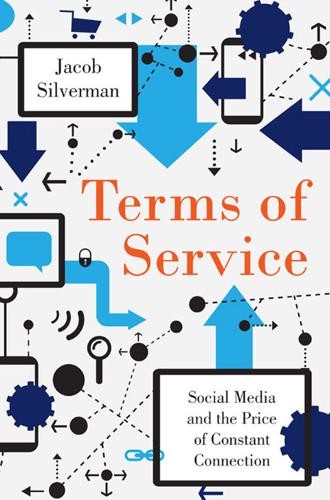
Terms of Service: Social Media and the Price of Constant Connection
by
Jacob Silverman
Published 17 Mar 2015
Some of the NSA’s surveillance capacity derives from deals made with Internet firms—procedures for automating court-authorized information retrieval, direct access to central servers, and even (as in the case of Verizon) fiber optic cables piped from military bases into major Internet hubs. In the United States, the NSA uses the FBI to conduct surveillance authorized under the Patriot Act and to issue National Security Letters (NSLs)—subpoenas requiring recipients to turn over any information deemed relevant to an ongoing investigation. NSLs often come with gag orders preventing the recipient, such as an e-mail provider, from disclosing to anyone that they have been subpoenaed. The NSA and its partners in the Five Eyes—five English-speaking countries (USA, Canada, the United Kingdom, Australia, and New Zealand) that have agreed not to spy on one another—also hack into computer systems around the world, those of everyone from civilians to terrorists to heads of state to major cloud-storage systems and Internet backbones, the links between the major networks powering the Internet.
…
See also sentiment analysis Moran, Robert, 191 Morozov, Evgeny, 4–5, 84, 322 Moves fitness app, 305–6 mugshot Web sites, 207–9, 210–11, 213–14, 217 multitasking, 51–52 Mun, Sang, 358 MyEx.com, 210 Myspace, 9 Nambikwara tribe, Brazil, 167–68, 356 narcissism of the social media experience, 61–62 National Reconnaissance Office spy satellite, 314 National Science Foundation (NSF), 279 National Security Agency (NSA), 129–32, 312, 314 National Security Letters (NSLs), 130 NEC, 299, 301 negative sentiments and sharing, 24, 31, 203–4, 305 Negri, Toni, 264 networked privacy model, 291–92 network effects, 13–14, 47, 272–73, 275–76, 295, 327 news consumers’ culpability, 109 news organizations algorithms rating news outlet importance, 84–85 and audience metrics, 101–2, 103 and embeddable media, 259–60 firehose approach to news, 112 as invasion of privacy, 288 memes from local newscasts, 69–72 presidential press conferences, 105 pushing articles selectively, 98 social media/viral editor, 122–23 trawling social media, 113 trending articles as premium journalism, 101 See also BuzzFeed; journalism New Times newspaper, 67–68 New York City and Uber, 237 New York Comic Con 2013, 34 New York Post, 113 New York Times Magazine, 75 Nike, 139 Niquille, Simone C., 356–57 Nissenbaum, Helen, 284, 297 notifications and alerts, 50–53, 214 NSA (National Security Agency), 129–32, 312, 314 NSF (National Science Foundation), 279 NSLs (National Security Letters), 130 Obama, Barack, 134, 169, 194 “Obama Is Wrong” (Hayes), 105–6 ObscuraCam, 357 Occupy movement, 136–37 OCR (optical character recognition) software, 260, 358 O’Donnell, Robert, 152 Office Max, 279–80 OkCupid, 204 Old Spice advertising campaign, 93–94 Omidyar, Pierre, 239 online persona, 344–45 online recommendations, 201–2 online reputation.
…
See also sentiment analysis Moran, Robert, 191 Morozov, Evgeny, 4–5, 84, 322 Moves fitness app, 305–6 mugshot Web sites, 207–9, 210–11, 213–14, 217 multitasking, 51–52 Mun, Sang, 358 MyEx.com, 210 Myspace, 9 Nambikwara tribe, Brazil, 167–68, 356 narcissism of the social media experience, 61–62 National Reconnaissance Office spy satellite, 314 National Science Foundation (NSF), 279 National Security Agency (NSA), 129–32, 312, 314 National Security Letters (NSLs), 130 NEC, 299, 301 negative sentiments and sharing, 24, 31, 203–4, 305 Negri, Toni, 264 networked privacy model, 291–92 network effects, 13–14, 47, 272–73, 275–76, 295, 327 news consumers’ culpability, 109 news organizations algorithms rating news outlet importance, 84–85 and audience metrics, 101–2, 103 and embeddable media, 259–60 firehose approach to news, 112 as invasion of privacy, 288 memes from local newscasts, 69–72 presidential press conferences, 105 pushing articles selectively, 98 social media/viral editor, 122–23 trawling social media, 113 trending articles as premium journalism, 101 See also BuzzFeed; journalism New Times newspaper, 67–68 New York City and Uber, 237 New York Comic Con 2013, 34 New York Post, 113 New York Times Magazine, 75 Nike, 139 Niquille, Simone C., 356–57 Nissenbaum, Helen, 284, 297 notifications and alerts, 50–53, 214 NSA (National Security Agency), 129–32, 312, 314 NSF (National Science Foundation), 279 NSLs (National Security Letters), 130 Obama, Barack, 134, 169, 194 “Obama Is Wrong” (Hayes), 105–6 ObscuraCam, 357 Occupy movement, 136–37 OCR (optical character recognition) software, 260, 358 O’Donnell, Robert, 152 Office Max, 279–80 OkCupid, 204 Old Spice advertising campaign, 93–94 Omidyar, Pierre, 239 online persona, 344–45 online recommendations, 201–2 online reputation.
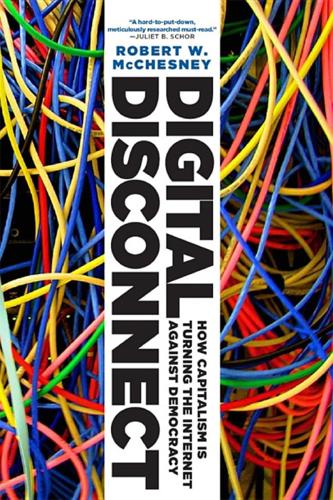
Digital Disconnect: How Capitalism Is Turning the Internet Against Democracy
by
Robert W. McChesney
Published 5 Mar 2013
There were only 2,732 nationwide in 2011, a 14 percent drop from 2010. The New York Times, to its credit, editorialized against the cell phone spying, wondering if privacy even continues to exist.238 Since September 11, 2001, when it comes to spying on Americans, the Federal Bureau of Investigation has increasingly turned to the National Security Letter (NSL), an administrative demand letter or subpoena requiring neither probable cause nor judicial oversight. As David Rosen puts it: In effect, an NSL overrides 4th Amendment guarantees safeguarding an American’s right [to be free] from unreasonable search and seizure. Between 2000 and 2010 (excluding 2001 and 2002, for which no records are available), the FBI was issued 273,122 NSLs; in 2010, 24,287 letters were issued pertaining to 14,000 U.S. residents.
…
See self-obsession Narus, 163 national defense. See national security nationalization. See public ownership National Public Radio, 89 National Science Foundation, 101 National Science Foundation Network (NSFNet), 102, 104 national security, 51–52, 53, 100, 159–71, 196 National Security Agency, 161, 163, 164 National Security Letter (NSL), 166, 167 Naughton, John, 12, 72, 108, 135, 136, 161, 190 NBC Universal, 124, 137 NCTA v. Brand X, 111 “negative externalities,” 50–51, 53, 217, 242n84 The Net Delusion (Morozov), 10 Netflix, 127, 263n79 Netherlands, 113, 210 Net neutrality, 118–20 Netscape, 137, 138, 147 network effects, 132, 188 New Deal, 284n39 Newman, Nathan, 100 New Orleans Times-Picayune, 181–82 news aggregators.

Come and Take It: The Gun Printer's Guide to Thinking Free
by
Cody Wilson
Published 10 Oct 2016
We’re going to have to get Stratasys to come service it.” “Can you hide it like we talked about?” We agreed. The printer would hide out in the body shop beside the gun-printing closet to fool the corporate repairman. “Are you not worried now?” John asked. “I mean, this is the part where they send us the national security letter. Or where you get disappeared.” “This ex–Special Forces guy started emailing me a couple months ago,” I said. “We talk now, and the other day he tells me about NATO bombing Yugoslavia and how much it slowed down MySQL commits. Serb developers would just never be heard from again on the email list.”

The Snowden Files: The Inside Story of the World's Most Wanted Man
by
Luke Harding
Published 7 Feb 2014
Another was Jay Rockefeller, who held the position at the time – and who had denounced the same surveillance activities when the Times exposed them. A third was the liberal hope of the early 21st century, a first-term senator from Illinois and constitutional law professor. Barack Obama, in a 2007 stump speech for his nascent presidential campaign, had pledged, ‘No more illegal wiretapping of American citizens. No more National Security Letters to spy on American citizens who are not suspected of a crime. No more tracking citizens who do no more than protest a misguided war. No more ignoring the law when it is inconvenient.’ Obama, the Democratic nomination in sight, and from there the presidency, voted for the FAA on 9 July 2008.

Paper Knowledge: Toward a Media History of Documents
by
Lisa Gitelman
Published 26 Mar 2014
Both gestures by Congress helped initiate the information regime in which Americans have continued to live, a regime additionally structured by an extended sequence of laws of fluctuating strictness and enforcement and, in some cases, evasion, if one thinks of the Patriot Act of 2001 and the expanded powers of the Bush presidency, with its national security letters and avoidance of the Foreign Intelligence Surveillance Court, or if one thinks of questions raised under the Obama administration about electronic surveillance by the National Security Agency. Privacy and the retention or destruction of paperwork in the private sector are governed by a related body of law that includes everything from rules about privacy in the Health Insurance Portability and Accountability Act of 1996 to laws like the Public Company Accounting Reform and Investor Protection Act of 2002 (popularly known as Sarbanes-Oxley), which strengthened corporate accounting standards after the collapse of Enron.
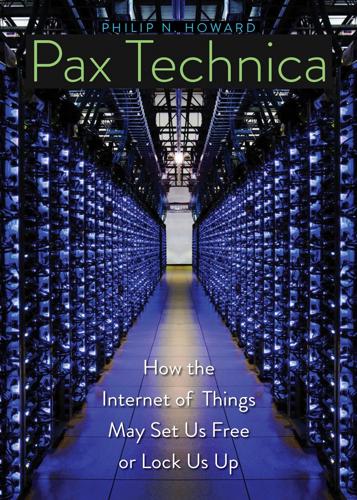
Pax Technica: How the Internet of Things May Set Us Free or Lock Us Up
by
Philip N. Howard
Published 27 Apr 2015
WIRED, September 4, 2013, accessed September 30, 2014, http://www.wired.com/2013/09/black-budget-what-exactly-are-the-nsas-cryptanalytic-capabilities/. 21. Declan McCullagh, “How the U.S. Forces Net Firms to Cooperate on Surveillance,” CNET, July 12, 2013, accessed September 30, 2014, http://www.cnet.com/news/how-the-u-s-forces-net-firms-to-cooperate-on-surveillance/. 22. Kim Zetter, “Google Takes on Rare Fight Against National Security Letters,” Wired, April 4, 2013, accessed September 30, 2014, http://www.wired.com/2013/04/google-fights-nsl/. 23. “Lavabit,” accessed June 16, 2014, http://lavabit.com/; “Silent Circle,” accessed June 16, 2014, http://silentcircle.com/. 24. Author’s calculations based on the transparency reports available from Facebook (https://govtrequests.facebook.com/, accessed September 24, 2014), Google (http://www.google.com/transparencyreport/, accessed September 24, 2014), and Twitter (https://transparency.twitter.com, accessed September 21, 2014). 25.

Great American Hypocrites: Toppling the Big Myths of Republican Politics
by
Glenn Greenwald
Published 14 Apr 2008
If that sounds hyperbolic, just review the disclosures over the course of recent years concerning what databases the federal government has created and maintained—everything from records of all domestic telephone calls we make and receive, to the content of our international calls, to risk-assessment records based on our travel activities, to all sorts of new categories of information about our activities obtainable by the FBI through the use of so-called National Security Letters. And none of that includes, obviously, the as-yet-undisclosed surveillance programs undertaken by the most secretive administration in history. This endless expansion of federal government power by the small-government, states-rights wing of the Republican Party is no longer even news. They barely bother to espouse these principles except when it comes time to win elections.

Doing Time Like a Spy
by
John Kiriakou
Published 11 May 2017
Daniel Ellsberg, who is probably the most important and highly-respected American whistleblower of the past half-century, once told me that every dirty trick that the Nixon White House pulled on him in order to convict him of espionage for leaking information about the Vietnam War is now legal under the Patriot Act. With a “national security letter,” not even a warrant, the FBI can get your medical records, treatment notes from your psychiatrist, your phone records, what kind of books you buy, or what you borrow from the library. They can build a case against you whether you’ve done anything or not. Harvey Silverglate, whom I’ve mentioned earlier in this book, posits in his book Three Felonies a Day that the United States is so over-legislated and over-regulated that the average American, on the average day, going about his or her normal business, commits three felonies.
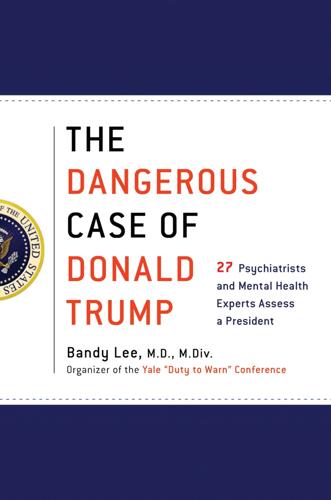
The Dangerous Case of Donald Trump: 27 Psychiatrists and Mental Health Experts Assess a President
by
Bandy X. Lee
Published 2 Oct 2017
“Is the ‘Trump Effect’ Damaging Our Psyches?” CNN, October 14, 2016. Accessed April 7, 2017. www.cnn.com/2016/10/14/health/trump-effect-damaging-american-psyche/. “A Letter from G.O.P. National Security Officials Opposing Donald Trump.” 2006. New York Times, August 8. www.nytimes.com/interactive/2016/08/08/us/politics/national-security-letter-trump.html. Monahan, J. The MacArthur Violence Risk Assessment: Executive Summary. 2001. Accessed April 6, 2017. www.macarthur.virginia.edu/risk.html. Murkowski, Lisa. “Full Statements on Donald Trump from Alaska Sens. Lisa Murkowski and Dan Sullivan.” Alaska Dispatch News, December 12, 2016.
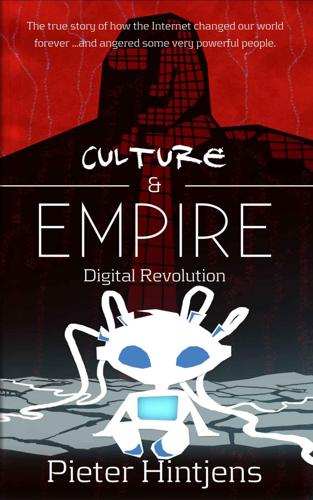
Culture & Empire: Digital Revolution
by
Pieter Hintjens
Published 11 Mar 2013
And if you resist, or if you talk about this deal, your company will die, and you will go to prison. When you hear the CEOs and spokespeople of thriving corporations denying their level of cooperation with the NSA, you need to question their freedom to tell the truth. When a firm receives a National Security Letter, it is obliged by law to deny that fact. The tragic irony is that it's the nicer business executives, the 96% or so who are not psychopaths, who buckle under such threats. It takes a peculiarly tough disregard for authority and their sanctions, one close to a mental disorder, to stand up and fight bribery and corruption when all those around you are losing their heads, as it were.
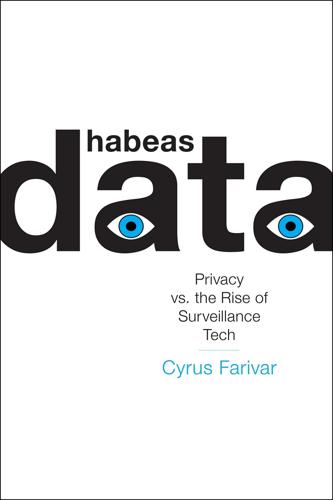
Habeas Data: Privacy vs. The Rise of Surveillance Tech
by
Cyrus Farivar
Published 7 May 2018
Still in his volleyball outfit, Levison patiently explained how he had set up Lavabit, with digital security in mind. For a select group of paying customers (roughly 10,000 at the time), Levison offered an encrypted e-mail feature. As an e-mail provider, Levison was primarily worried about being served with a national security letter (NSL), which would force him to act as a government agent and conduct secret surveillance of one of his users. Worse than that, Levison wouldn’t be able to tell anyone—not his own lawyer, and certainly not the target of the investigation—about what was actually going on. As he wrote on Lavabit’s website in 2013: Lavabit believes that a civil society depends on the open, free and private flow of ideas.

Careless People: A Cautionary Tale of Power, Greed, and Lost Idealism
by
Sarah Wynn-Williams
Published 11 Mar 2025
When it comes to the Chinese government getting access to all the data in Facebook’s data warehouse, a report offers drily, “Note that this will happen.” This is the kind of government access to user information that we’d aggressively fought against providing to the US government, even after receiving National Security Letters demanding it in specific cases. When Edward Snowden revealed that the NSA had hacked into Facebook to spy on its users in 2013, Mark called President Obama to express his frustration over government surveillance and “the damage the government is creating for all of our future.” He and Joel went to the White House to meet with Obama about it, with Mark saying, “The government kind of blew it on this.
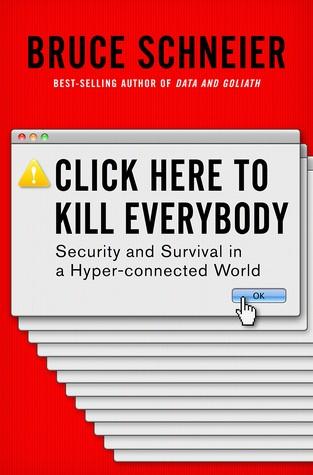
Click Here to Kill Everybody: Security and Survival in a Hyper-Connected World
by
Bruce Schneier
Published 3 Sep 2018
Many local governments keep comprehensive data about people’s movements, collected from license plate scanners mounted on street poles and mobile vans. And, of course, many corporations have us all under surveillance through a variety of mechanisms. Governments regularly demand access to that data in ways that don’t require a warrant, such as subpoenas and national security letters. I worry that some of the catastrophic risks I wrote about in Chapter 5 will lead policy makers to go beyond backdoors and weakened cryptography, to authorize ubiquitous domestic surveillance. Leaving out the 1984-like ramifications that make it a terrible idea on the face of it, the effectiveness of ubiquitous surveillance is very limited.
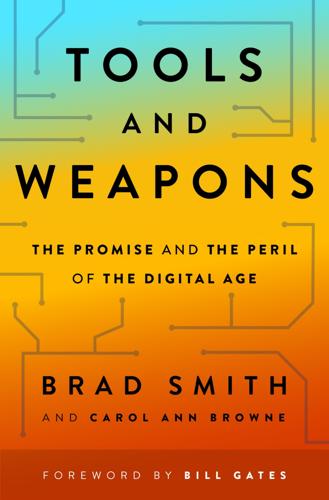
Tools and Weapons: The Promise and the Peril of the Digital Age
by
Brad Smith
and
Carol Ann Browne
Published 9 Sep 2019
In 2013, we stated publicly that we would notify our business and government customers if we received legal orders for their data.13 If a gag order prohibited us from telling them, we’d challenge the order in court. We’d also direct government agencies to go straight to our customers for information or data about one of their employees—just as they did before these customers moved to the cloud. And we’d go to court to make it stick. We faced our first test when the FBI served us with a national security letter seeking data that belonged to an enterprise customer. The letter barred us from telling the customer that the FBI wanted its data. We studied the letter and could see no reasonable basis for the FBI to prohibit us from notifying the customer, let alone demand the data from us rather than obtain it directly from the customer.

Future Crimes: Everything Is Connected, Everyone Is Vulnerable and What We Can Do About It
by
Marc Goodman
Published 24 Feb 2015
The IRS too began training its investigators on how to use social networks to investigate taxpayers back in 2009, and Homeland Security’s Citizenship and Immigration Service instructed its agents in 2010 to use social media sites to “observe the daily life of petitioners and beneficiaries suspected of fraud.” Federal agents can readily access your social data through a variety of means, by serving subpoenas, national security letters, and other administrative orders on your service providers, who under the third-party doctrine exception to the Fourth Amendment needn’t even notify you of the request. For example, AT&T revealed that in 2013 it received more than 300,000 requests for data relating to both civil and criminal cases.

Free Speech: Ten Principles for a Connected World
by
Timothy Garton Ash
Published 23 May 2016
The telecommunications report also reveals another variant of the Pinteresque, encountered in one of the world’s most democratic, rule-of-law states: carefully drafted laws that prohibit the disclosure even of the mere fact that a company or other body has disclosed information to the government under that law. Thanks to Snowden, the politically informed public would become familiar with such secret FISA court orders and National Security Letters. But a few years earlier, when I heard about them for the first time, I asked senior figures at both Facebook and Twitter whether they could at least give me some idea of the number of such orders they had received and complied with. Tens? Hundreds? Thousands? Shifting in their seats and looking deeply uncomfortable, these faithful sons of the Church of the First Amendment said they would be breaking the law if they did that.